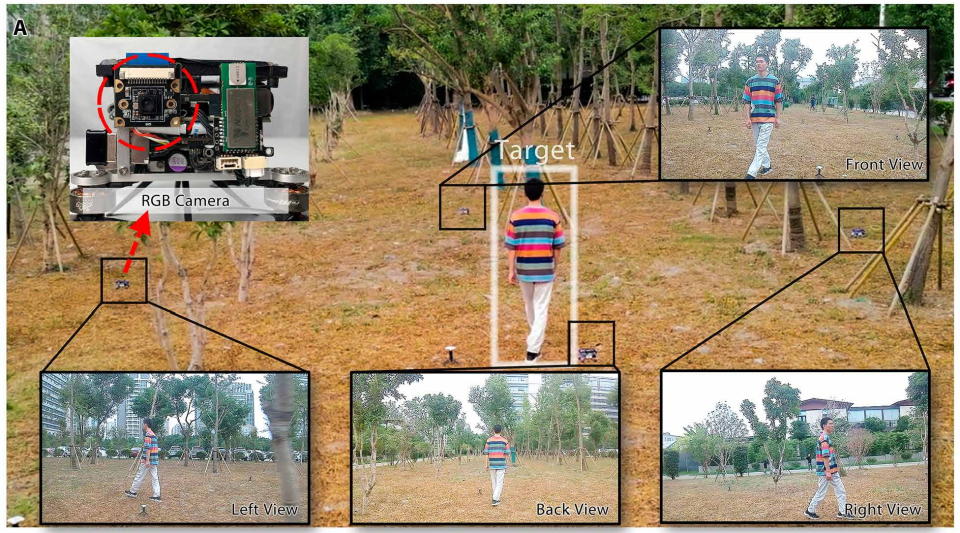Swarming drones autonomously navigate a dense forest (and chase a human)
If drones are to take over any of the numerous tasks they are supposed to, they're going to have to get a lot smarter — and learn to work together. In a demonstration of both of these things, Chinese researchers show off a swarm of drones collectively navigating a dense forest they've never encountered.
We've seen drone swarms before, going back a long ways in fact, but while they're often well coordinated, they're not collectively autonomous. That is, although they fly in an adjustable formation and avoid obstacles, their trajectories are being controlled by a central computer monitoring their positions and issuing commands.
As you can imagine, it would be useful to have drones that can coordinate their movements with each other, absent any central organizing function. But this is difficult to effect, since the bulk of the sensors and computational resources needed to quickly and effectively perceive and react to the environment are detrimental to the very agility needed to do so.
Researchers at Zheijang University in Hangzhou have succeeded, however, with a 10-strong drone swarm smart enough to fly autonomously through a dense, unfamiliar forest, but small and light enough that each one can easily fit in the palm of your hand. It's a big step towards using swarms like this for things like aerial surveying and disaster response.
Based on an off-the-shelf ultra-compact drone design, the team built a trajectory planner for the group that relies entirely on data from the onboard sensors of the swarm, which they process locally and share with each other. The drones can balance or be directed to pursue various goals, such as maintaining a certain distance from obstacles or each other, or minimizing the total flight time between two points, and so on.

No escape for you, target human.
The drones can also, worryingly, be given a task like "follow this human." We've all seen enough movies to know this is how it starts... but of course it could be useful in rescue or combat circumstances as well.
A part of their navigation involves mapping the world around them, of course, and the paper includes some very cool-looking 3D representations of the environments the swarm was sent through. Here's one:

Image Credits: Zhou et al
The study is published in the most recent issue of the journal Science Robotics, which you can read here, along with several videos showing off the drones in action.

 Yahoo Finance
Yahoo Finance 